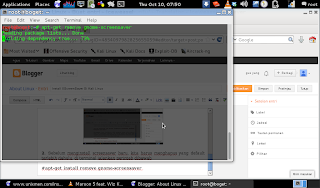

- XSCREENSAVER XUBUNTU HOW TO
- XSCREENSAVER XUBUNTU INSTALL
- XSCREENSAVER XUBUNTU PASSWORD
- XSCREENSAVER XUBUNTU WINDOWS
XSCREENSAVER XUBUNTU INSTALL
If it matters, this is an install in virtualbox on win10 and I haven’t had this issue with other DE’s (mainly tried cinnamon) and it doesn’t happen on the initial login to XFCE.
XSCREENSAVER XUBUNTU PASSWORD
I also know that it’s not just dots showing up in that field because clicking there, typing the password and hitting enter tried to check the password, but tells me it’s the incorrect password. The keyboard is working though, because hitting caps lock brings up the warning that caps lock is on. I am able to highlight the “Enter your password” text in the space I would normally type my password, but when I type anything it doesn’t change. A lot of the time (maybe all, I can’t say that for sure though), when I come back to the session the login screen won’t let me type in my password. I still have a lot of tweaking to do, but I’m working on all of that. You can follow the same steps as in GNOME 3 desktop.I gave in to all of the hype I’ve read on here and drove into XFCE some this weekend. To disable screen lock, simply change the setting in ~/.xscreensaver. Furthermore, its preferences dialog duplicates some of the settings covered by gnome-power-manager. While performing its job quite well, it does not integrate with the rest of the desktop as well as possible. You can also edit this file manually to adjust screen lock settings, without going through GUI. Ubuntu currently uses the xscreensaver package as the screen saver and screen locker. Once you change screensaver preferences via GUI like above, it will create ~/.xscreensaver, which is a screensaver preference file. In this settings, you can change screensaver activation time and screen lock delay, as well as enable/disable screen lock. To disable screen lock, simply change the following setting in ~/.kde/share/config/kscreensaverrc. Once the file is edited, the change will automatically take effect immediately. To adjust screen lock settings from the command line, you can edit ~/.kde/share/config/kscreensaverrc. Make sure xscreensaver is not set to lock the screen or to manage the display. After 300 seconds from that point on, screen lock will be activated, requiring password authentication. Install both xscreensaver and xsecurelock using your package manager. In this example, screensaver will be launched after 15 minutes of inactivity. Also, you can enable or disable screen locking. Here, you can change screen inactivity period and screen lock delay.
XSCREENSAVER XUBUNTU WINDOWS
Tru3m0sl3m has all kinds of tutorials, from Windows and Ubuntu Linux operating systems to Islamic videos. Go to System Settings -> Display and Monitor. As you well know, there are only a limited number of screensavers on Ubuntu, but by installing xscreensaver, you can have around 200 screensavers Just follow the tutorial. To install dconf-editor on Fedora: $ sudo yum install dconf-editor

To install dconf-editor on Debian, Ubuntu or Linux Mint: $ sudo apt-get install dconf-tools This means that a) you might post your password in a chat if you had it focused before the screen lcoked, b) anyone can see your screen if they just open your machine. It also does not blank the screen immediately after an unsuspend. To disable screen lock: $ dconf write /org/gnome/desktop/screensaver/lock-enabled falseĪlternatively, you can use dconf-editor, a GUI-frontend for dconf command. Xscreensaver does not grab the keyboard immediately and in all cases. To activate screensaver and lock the screen after 10 minutes: $ dconf write /org/gnome/desktop/session/idle-delay 600
XSCREENSAVER XUBUNTU HOW TO
If you want to control screen lock from the command line, here is how to do it. In this setting, you can set screen inactivity period and screen lock delay. Go to System Settings -> Brightness and Lock.

In this tutorial, I am going to show how to configure screen lock settings in various Linux desktop environments. Also, in case you want prevent your screen from going off and locked down for an extended period of time (e.g., when watching a movie), you probably want to disable screen lock feature. You may want to adjust these settings based on your typical work environment. The default screensaver is typically configurable, and you can change settings like inactivity period or screen lock delay. This case means that the argument, if not present, will default to '1'. Notation: Some documentation uses window to denote an optional window argument. How to adjust screen lock settings on Linux desktopĮvery major Linux desktop nowadays comes with a screensaver program by default (e.g., xscreensaver), which then can be used to lock the screen for security purposes. Provided by: xdotool3.20130111.1-3.1amd64 NAME xdotool - command-line X11 automation tool SYNOPSIS xdotool cmd args.


 0 kommentar(er)
0 kommentar(er)
